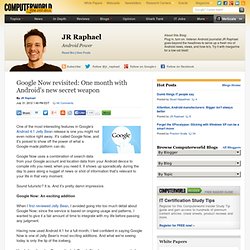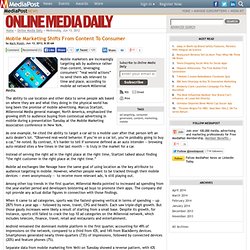

Notebook Processors. The Intel Core 2 Duo class of processors is the successor to the Core Duo with longer pipelines, 64 Bit support, a fourth decoder, an amplified SSE-unit and an additional arithmetical logical unit (ALU).

Because of these improvements, the Core 2 Duo CPUs should be 5-20% faster than a similarly clocked Core Duo. As the name suggests, the Core 2 Duo lineup consists of CPUs with 2 cores. Optimizing Digital Photo Enlargment. Digital photo enlargement to several times its original 300 PPI size, while still retaining sharp detail, is perhaps the ultimate goal of many interpolation algorithms.

Despite this common aim, enlargement results can vary significantly depending on the resize software, sharpening and interpolation algorithm implemented. The problem arises because unlike film, digital cameras store their detail in a discrete unit: the pixel. Any attempt to magnify an image also enlarges these pixels — unless some type of image interpolation is performed. Move your mouse over the image to the right to see how even standard interpolation can improve the blocky, pixelated appearance. Before proceeding with this tutorial, know that there is no magic solution; the best optimization is to start with the highest quality image possible.
Recall that all non-adaptive interpolation algorithms always face a trade-off between three artifacts: aliasing, blurring and edge halos. HARDWARE vs. LG Apps TV. Google Now revisited: One month with Android's new secret weapon. One of the most interesting features in Google's Android 4.1 Jelly Bean release is one you might not even notice right away.

It's called Google Now, and it's poised to show off the power of what a Google-made platform can do. Google Now uses a combination of search data from your Google account and location data from your Android device to compile info you need, when you need it. It shows up sporadically during the day to pass along a nugget of news or shot of information that's relevant to your life in that very moment. Sound futuristic? It is. Google Now: An exciting addition When I first reviewed Jelly Bean, I avoided going into too much detail about Google Now; since the service is based on ongoing usage and patterns, I wanted to give it a fair amount of time to integrate with my life before passing any judgment.
Having now used Android 4.1 for a full month, I feel confident in saying Google Now is one of Jelly Bean's most exciting additions. Not too shabby. Plug in, turn on. IndoorAtlas app provides navigation using earth's magnetic field. Indoor navigation has long been one of the toughest problems in mobile — GPS satellites are prone to failure when users are underneath more than a few inches of roofing, and there are precious few other ways of reliably determining a device's position.

But this is precisely the problem that Finnish startup IndoorAtlas claims to have solved. A spinoff from research at the University of Oulu, IndoorAtlas' upcoming app uses the built-in compass found in most modern smartphones to detect changes in the earth's natural magnetic field — the same technique used by homing pigeons. These tiny alterations correspond to the position of man-made objects such as desks and shelves, as well as a building's fundamental materials, allowing users to reliably navigate around pre-prepared floor plans without the need for GPS or other positioning systems.
The company claims that its technology provides accuracy of up to 10 centimeters, easily enough to navigate in most public places. TNS - Mobile Life. What does a Web Hosting Server look like? Publications Mobile Marketing Shifts From Content To Consumer 06/13. Mobile marketers are increasingly targeting ads by audience rather than content, leveraging consumers’ “real world actions” to send them ads relevant to time and place, according to mobile ad network Millennial Media.

The ability to use location and other data to serve people ads based on where they are and what they doing in the physical world has long been the promise of mobile advertising. Marcus Startzel, Millennnial Media general manager, North America, emphasized the growing shift to audience buying from contextual advertising in mobile during a presentation Tuesday at the Mobile Marketing Association conference in New York. As one example, he cited the ability to target a car ad to a mobile user after that person left an auto dealer’s lot. “Observed real-world behavior. If you’re on a car lot, you’re probably going to buy a car,” he noted. Mobile ad exchanges like Nexage have the same goal of using location as the key attribute to audience targeting in mobile. Should All Ad Impressions on Mobile Devices Really Count as ‘Mobile?’ Every year seems to be the year of mobile.

Well, it may just finally be here! Looking at all the trends, there is no doubt mobile is hot. My life is now almost entirely mobile — PC, laptop, iPad, phone, TV, music; all connected via Wifi most of the time.